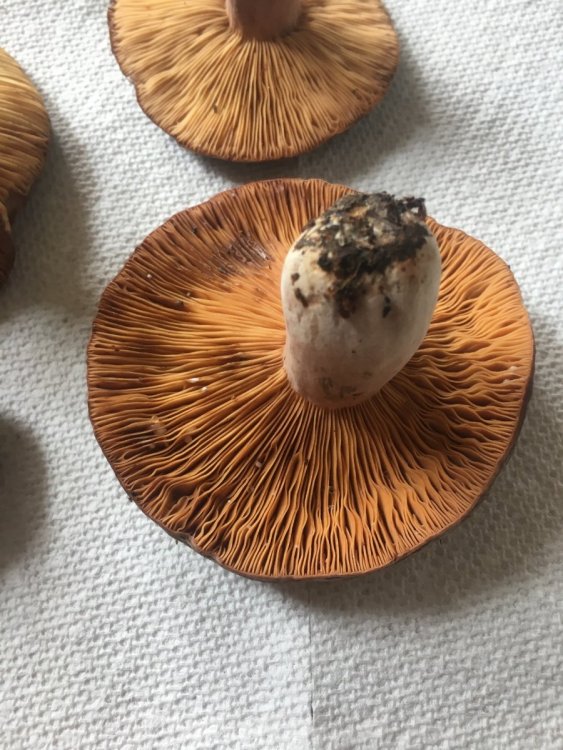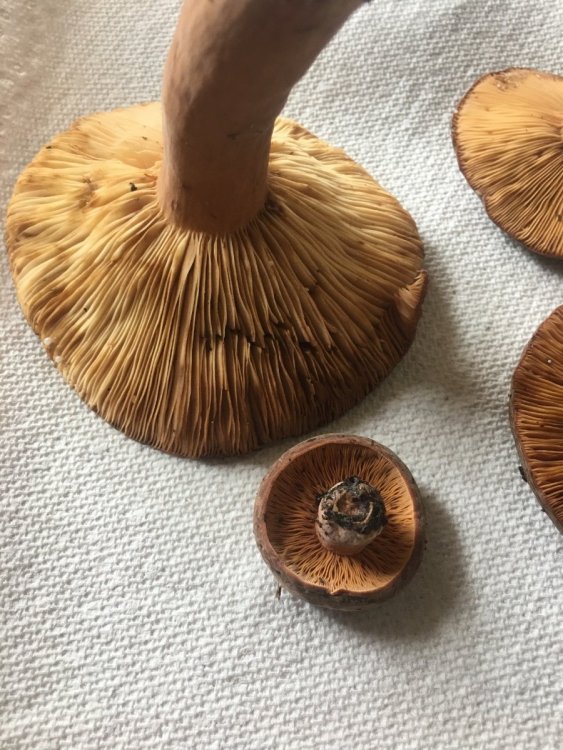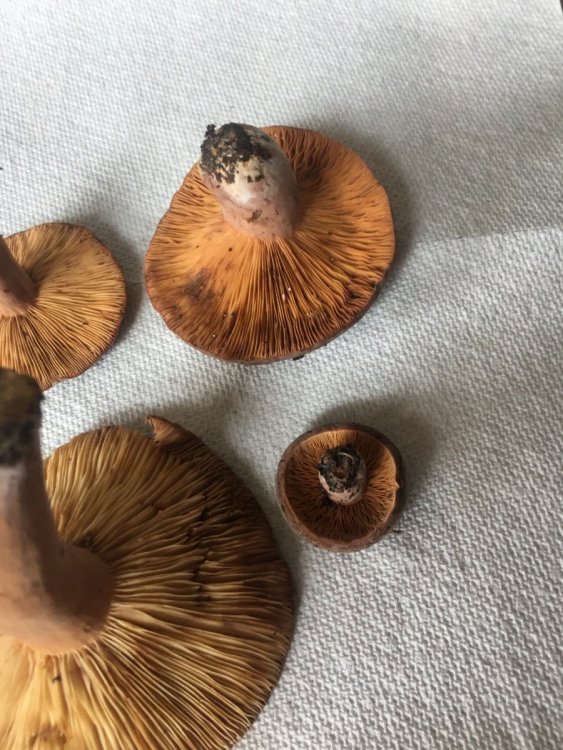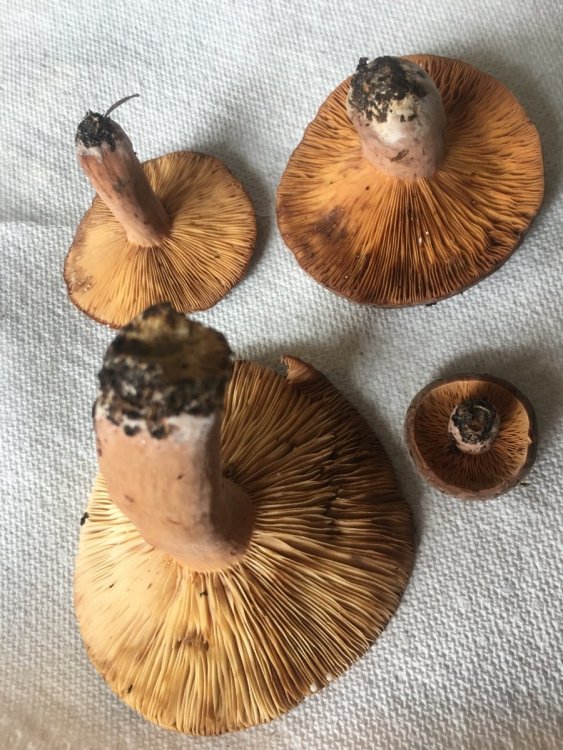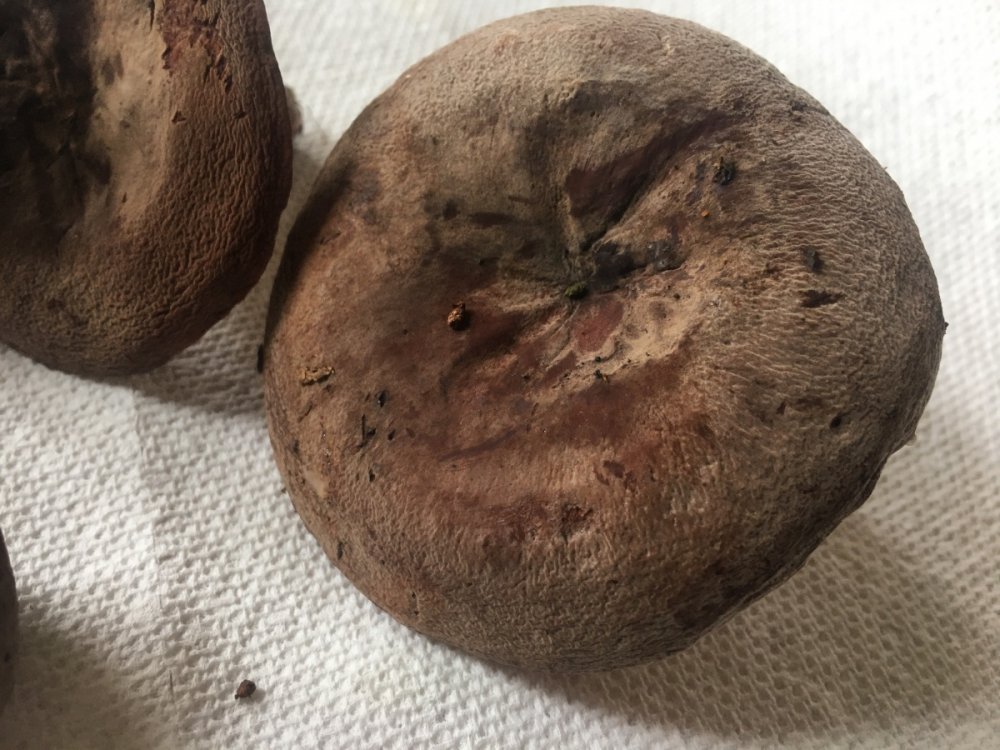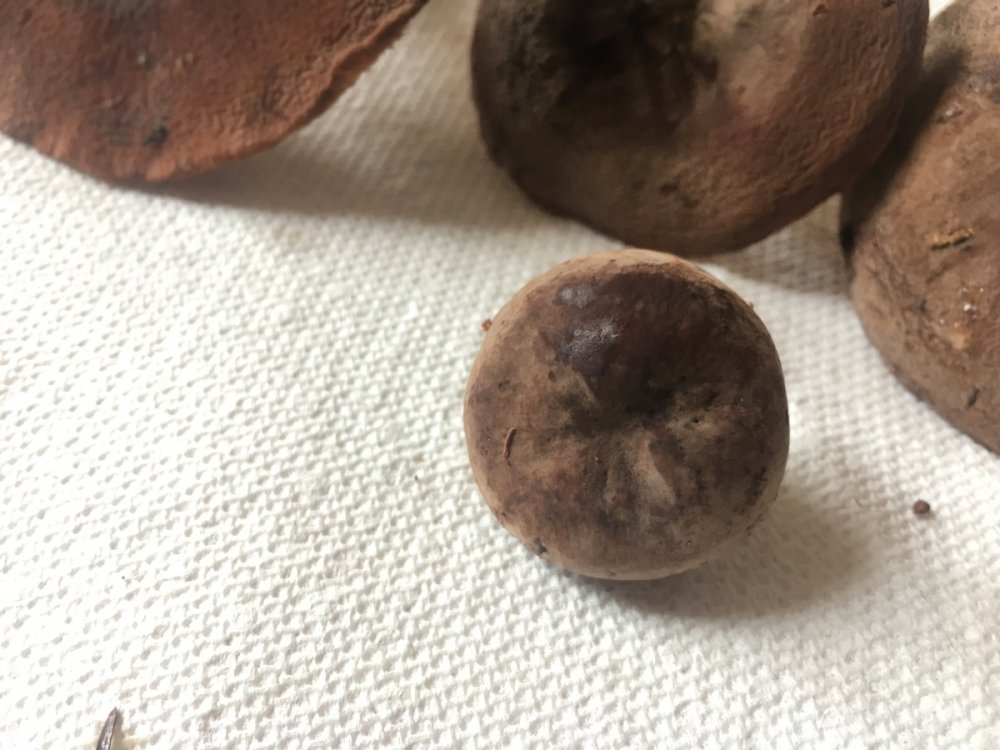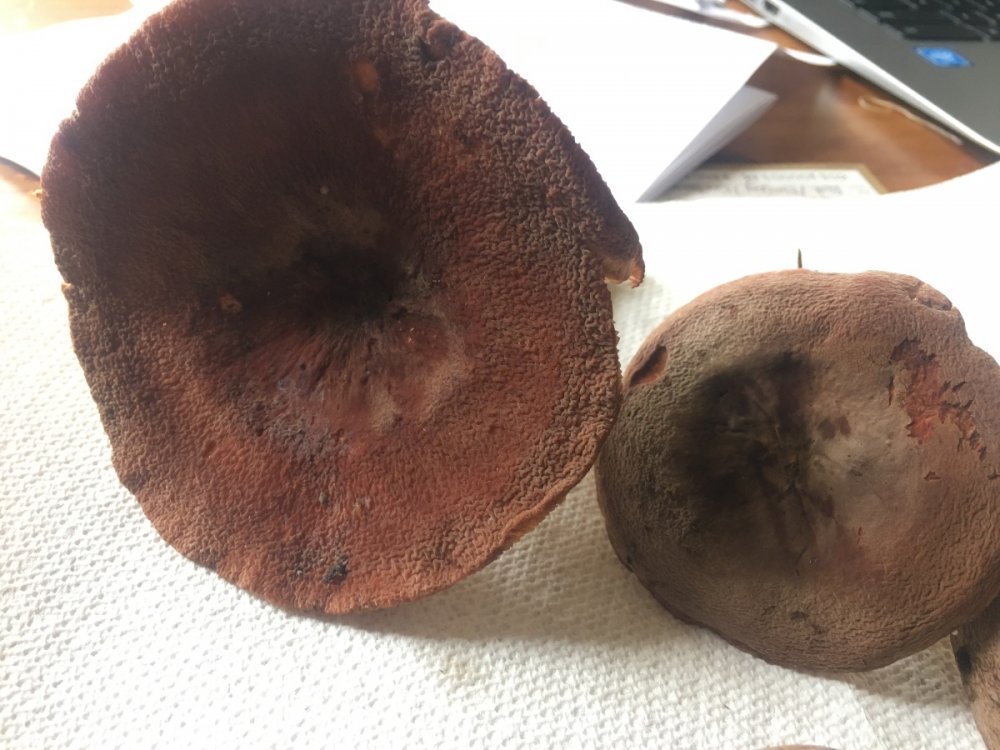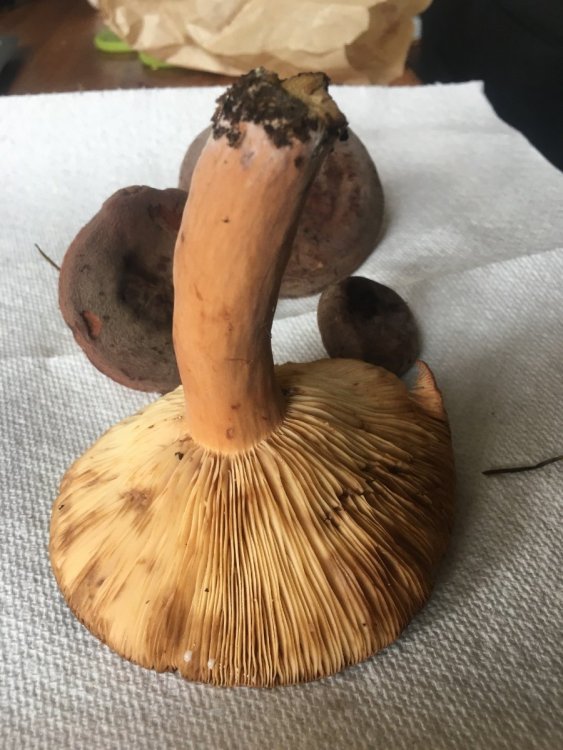

brendan
Members-
Posts
325 -
Joined
-
Last visited
Everything posted by brendan
-
A word of caution- if you go looking for someone to tell you a mushroom is safe to eat after ignoring its traits, sooner or later you will get the answer you want, whether or not it’s the answer you need. Google images are not policed for authenticity and as you demonstrated, are frequently wrong. Eating mushrooms you have not fully identified can lead to organ failure and death. There are some real amazing mycophiles on here who can be incredibly helpful. However, ultimately the only person who can determine the edibility of your mushrooms is you, since you are the one who will suffer if you are wrong. We can’t hold, touch, smell, or examine your finds, all we can do is look at the photos you provide. Please familiarize yourself with how to utilize keys, it is absolutely crucial if you wish to proceed in this hobby. There are very few mushrooms that are so easy to identify that anyone will say “yes that’s absolutely safe to eat and I take responsibility if you get sick.” It just doesn’t work that way.
-
Slippery jacks should have a ring around the stalk I believe. While it’s possible these just lost that ring through age, it seems unlikely that all of them would have. I’d guess these are probably not slippery jacks. You can compare here- https://www.mushroomexpert.com/suillus_luteus.html
-
I’m not sure my ID is correct but if it is the mushroom is poisonous. Highly likely it’s poisonous.
-
Almost definitely a chanterelle, possibly https://www.mushroomexpert.com/craterellus_ignicolor.html
-
I can't really tell in the photos, is the stem reticulated (with a raised fishnet-like pattern)? I'm not sure I can ID this one, someone else will be along who can help more though.
-
Nice work, Suillus mushrooms are sort of a group apart from boletes but I believe still fall under the category of bolete, someone else may be able to correct me haha. So you were headed in the right direction. Suillus mushrooms are known for having slimy caps and for associating with pine, so highly likely that is what you have. I don't know Suillus very well, you could try taking a spore print by cutting a cap off it's stem and setting it pore side down on tin foil for a few hours, this will give you a print and the color will help ID it. You can also use this key- https://www.mushroomexpert.com/suillus.html
-
Mushroom Expert says Aureoboletus mirabilis grows with hemlock in the pacific northwest up to Alaska... but It does not say anything about the east coast? I'm guessing this is something else. Is there any staining on the pore surface or the stem or interior flesh when bruised/cut?
-
They look like ringless honey mushrooms to me, the spore print should be white if so. I was out this morning (also in MD) and there were many young ringless honeys that were about the same size as these. I have found them with caps ranging from grey brown to pinkish to yellow, they are pretty variable. If you are interested in them as an edible, I'm not sure I'm confidant enough to say 100% these are ringless honeys, more like 80%. Best to take a spore print and wait for a few others to chime in. Even then- some people can't handle honey mushrooms and get sick, so if you do get a confidant ID and decide to try them, start slow with small portions.
-
I'd say likely a cortinarius species, maybe C. iodes?
-
Hi, found these today, 99% sure they are L corrugis but the color of the gills is bugging me, even the smaller ones have gills that really appear more brownish than pale buff. Although I know that’s supposed to be the look at maturity the two small ones seem almost browner then then fully mature specimen. I’m probably just over analyzing. Fish smell-check. White latex-check. Latex staining the gills brown-check. I can’t come up with anything else these could be... but that never comforts me much hahaha.
-
Gotcha. I had heard the term Canadian Shield before but I'm just now reading up on it, once again proving that mushrooms are the center of everything hahaha.
-
Hi! It’s possible others may be able to make out more from your photos but on my screen they are very small and kinda blurry, can you post clearer, individual pics?
-
very cool with the leaf
-
I believe Trametes versicolor should have very small pores, this has more of a maze pattern. I doubt this is turkey tail. You can use this to help you ID it further- https://www.mushroomexpert.com/trametes_versicolor.html
-
I see, yeah birch is unusual here and spruce is only in yards. Always keep my eye out for Norway spruce heh. Sounds beautiful up there, i spent some time in banff and jasper and loved it but I would imagine that’s actually really far from where you are.
-
Perhaps it’s the type of poplar? In three years I’ve never had any luck in the fall in poplar/maple/sycamore stands with the occasional pine, That’s the most prevalent ecosystem in my area and I generally pass through it when heading to oak/beech woods. I am right on the i95 corridor between Baltimore and DC so in general the woods are not very healthy, could be related I suppose. This is the best year I’ve had, previously to have success I had to drive a few hours west to Appalachia, the pickings there are way better. Oh to live in a wilder area.
-
Huh. Well one thing we do have in abundance is tulip poplar. I generally avoid it when not morel season because the poplar/maple/sycamore woods seem to be generally devoid of fungal activity compared to the oak/beech woods in this area. It's like desert vs. jungle in terms of diversity. And of course, in morel season, poplar woods in the area do CONTINUE to seem devoid of fungal activity. I am interested in hedgehogs though so I will do some more exploring see what I can find.
-
That's funny I must be missing it, where is the cortina remnant visible? Is it that brownish area on the stalk?
-
Sadly, hemlocks are exceedingly rare in my neck of the woods, these were under oak and beech. I have kept a lookout for areas with a fair amount of hemlock but only ever find single, generally scraggly trees.
-
Ha there were several marble sized fellas I'm intending to check in on tomorrow.
-
Also possibly lactifluus corrugis, Looks like the cap is a bit corrugated towards the center. I believe it is one of the two. Although it’s a bit stouter than most I find.
-
Seems like there's a lot of purple corts on here lately, I too have blewits on the mind heh. These had a rusty brown spore print, so definitely not blewits. Also the interior flesh is white. Not very experienced with ID'ing corts, nice to have some guidance. No sign of a cortina but then they seemed pretty mature so not too surprising. Most likely growing with Oak.
-
Thanks Dave! That looks like a good match. I honestly was wondering if hedgehogs just didn't grow in my area, this is the first I've found in three years, though I managed to find some on a trip to Korea haha.
-
Not certain but that looks like it could be a destroying angel, deadly poisonous if so, do not eat. The “inverse” you are seeing is the volva, some mushrooms start their growth in an egg form and then grow out of it, leaving traces of the egg at the base of the stalk.

